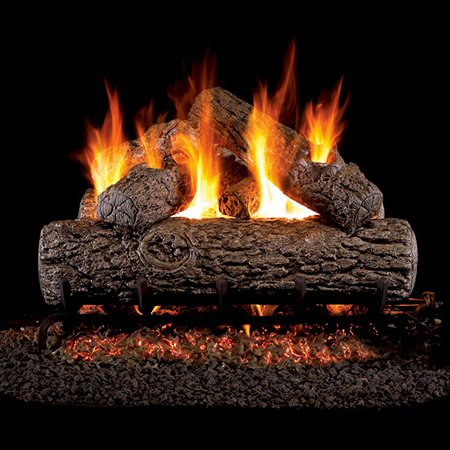Woodstoves, fireplaces, inserts and furnaces should be swept and inspected on a regular basis to avoid any incidence of chimney fire. Soot and creosote are by-products of incomplete combustion within the burning system. This can be caused by improper fuel loading, low burn habits, poor grade firewood or an improperly sized chimney flue. A low burning fire tends to make the combustion phase a smoldering production while a brisk hot fire makes for a great burning environment. To understand this you must begin to understand the basics of how wood burns.
How Wood Burns
When wood burns it goes through a chemical process called combustion. Combustion is easily explained by this formula.... Fuel + Heat + Air = Carbon Dioxide + Water Vapour + heat + Air. In a perfect world this is Complete Combustion, this rarely happens. What we generally get is an excess of hydrocarbons produced which form into soot, creosote and tarry substances. There are several different processes that happen with wood before the flames erupt.

Phases:
The water must be vaporized.
You all have probably heard the HISS of wood as it is put into a fire. This is the water beginning to heat and boil away. Once this is complete then phase two can begin.
Pyrolysis.
This is the drying and decomposing of the wood and the breakdown into chemical origins. The wood is preparing itself for the burn phase.
Fire is about to begin.
The hydrocarbons are beginning to combust (burn). Oxygen mixes with these chemicals and starts to produce heat and light (flames). You may feel the heat in this phase but you may not see the flames, yet
Combustion period.
The wood has sufficiently dried and changed its composition into charcoal. Charcoal is carbon and carbon burns. When a good supply of oxygen is introduced in the burn cycle, carbon dioxide is created (CO2) if not enough oxygen is introduced the Carbon Monoxide (CO) is produced. CO2 is a necessary chemical in our everyday lives. Plant forms ingest this chemical in order to help them grow.
Every animal exhales CO2 with every breath and the plants around us 'breath' it in and produce oxygen for us to breath. It is a symbiotic relationship. Even decaying wood in the forest produces CO2. Although the production is slower than that produced by wood burning, wood expels CO2 no matter if it is left as deadfall or burned as fuel.
CO [Carbon Mon-oxide] on the other hand is an odorless, poisonous gas that is harmful to any lifeform. (Google CO Poisoning). If it builds up into a concentrated form you will get sick and can die. This CO can be produced by ANY fuel burning appliance from kitchen ranges, to heat-stoves, fireplaces and furnaces. Even your gas fuelled dryer or hot water heater can produce CO if not installed and vented properly.
CO is NOT fuel specific.